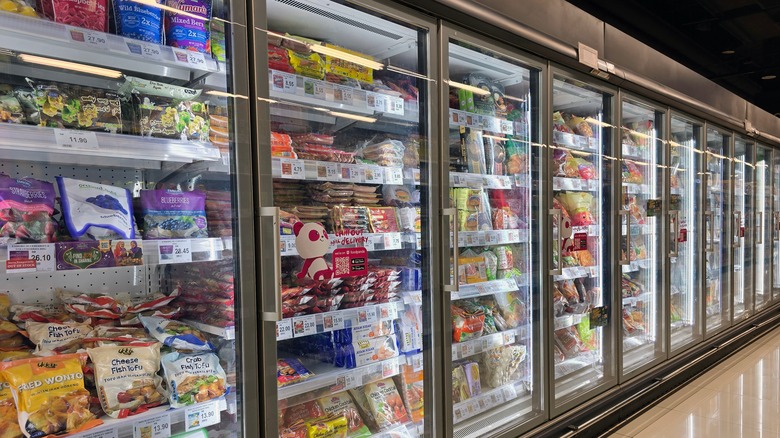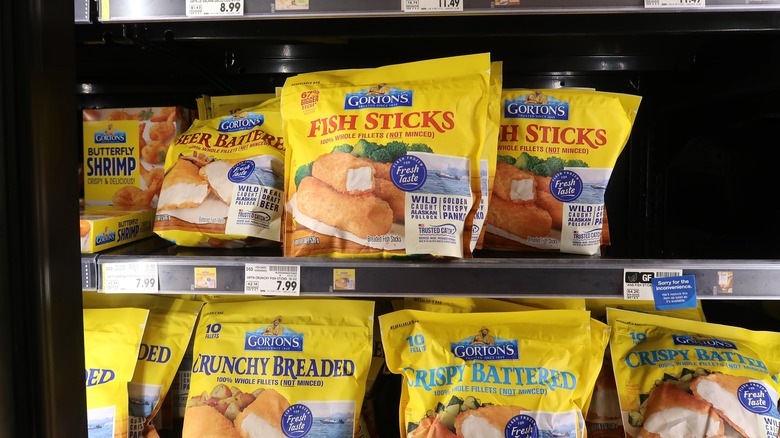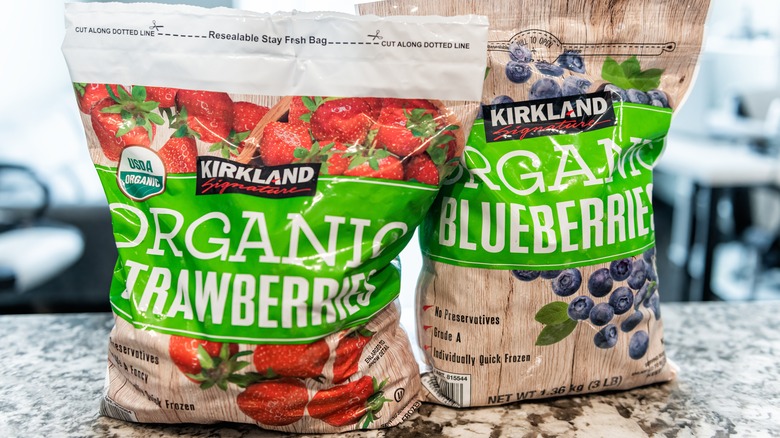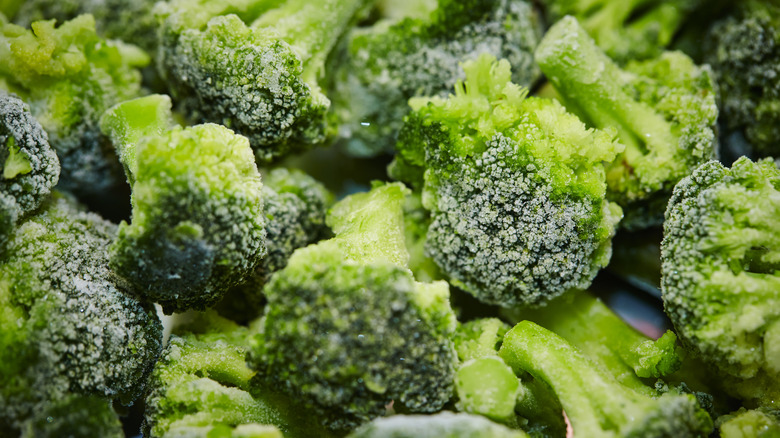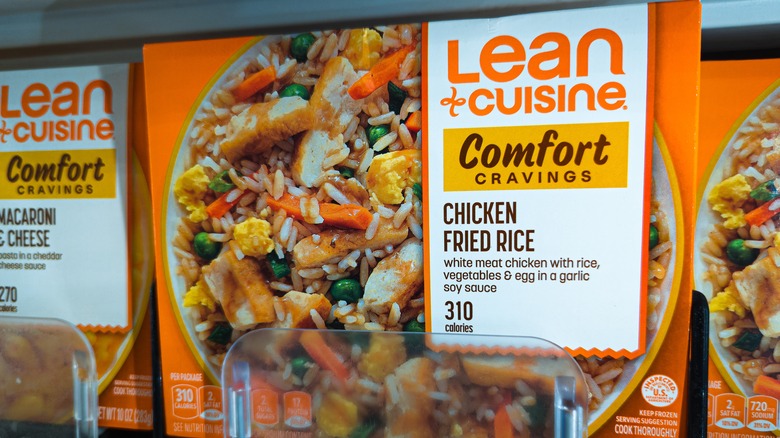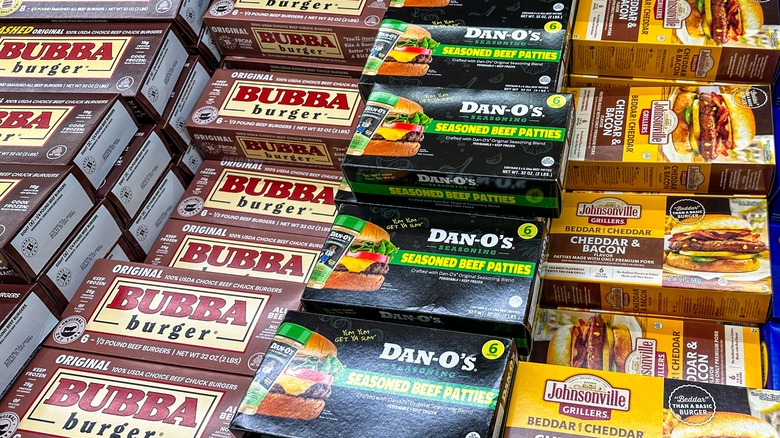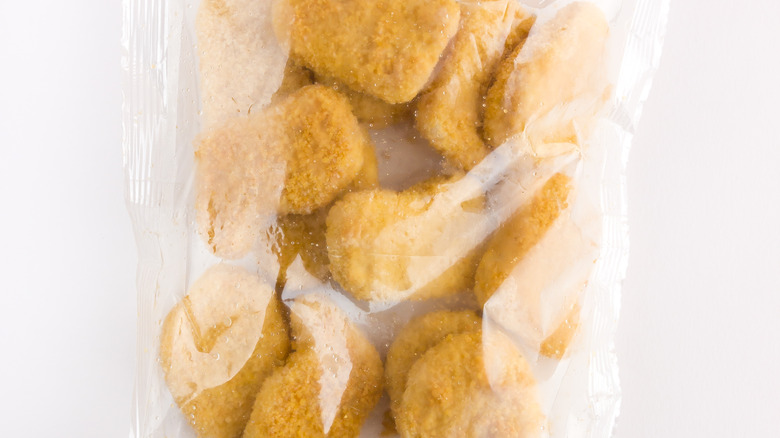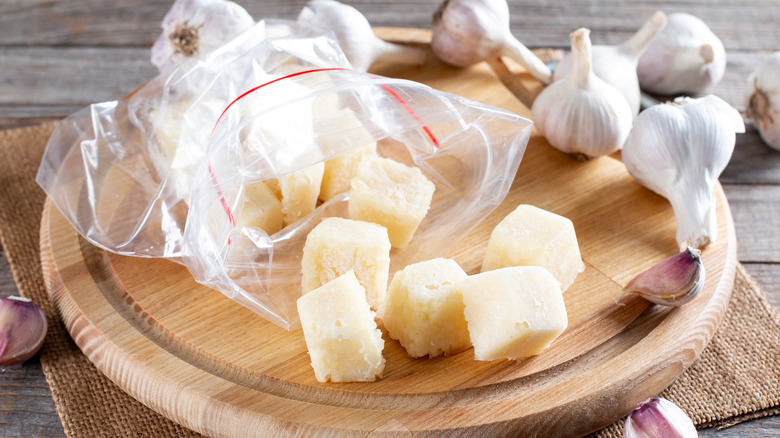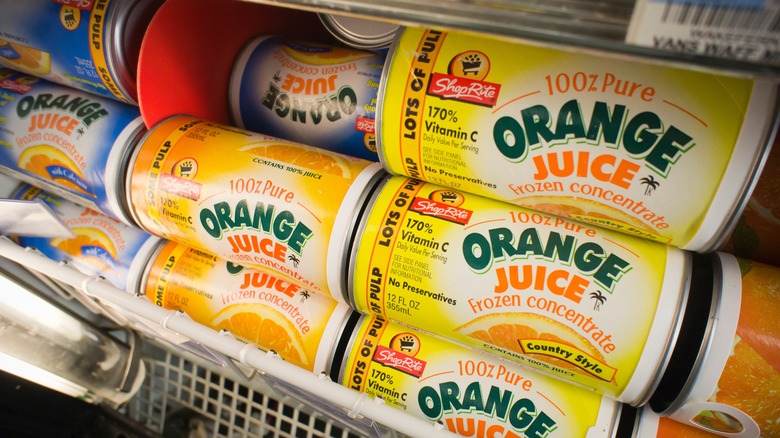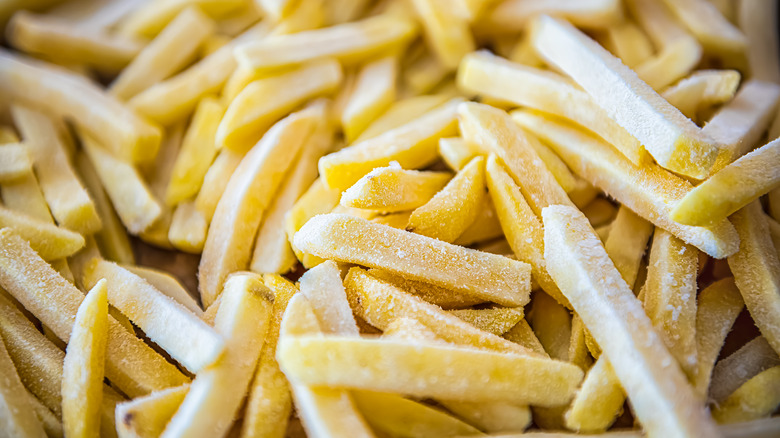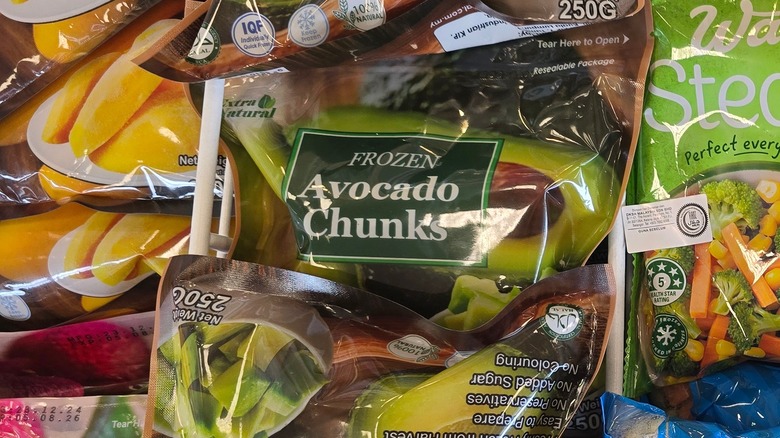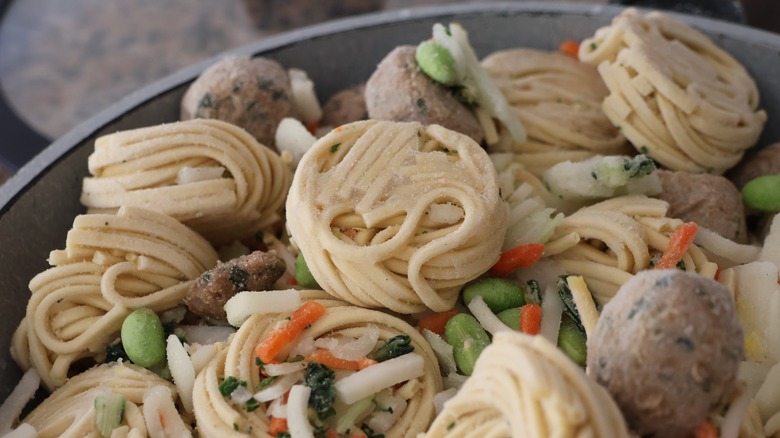12 Frozen Foods To Buy Now Before Prices Skyrocket
Look, it doesn't matter whatever you consider yourself politically. One thing is for sure: Those pesky tariffs are going to be the death of some of our bank accounts. That is, of course, if we don't get ahead of things while we still have a fighting chance.
The truth is, we are all hopeful that inflation and increased tariff costs, which historically get passed down to consumers, will eventually cool down and lead to lower prices across the board. However, for now, there is no end in sight. In fact, many of the Trump administration's proposed tariffs haven't gone into effect yet — they're still on pause while we await potential negotiations. If you want to save some hard-earned cash, stocking up on a few essential frozen items before things get worse is your only hope, at least for now. You should also stock up on these canned goods.
While prices for both imported and domestic foods are expected to rise pretty much across the board, there are a few frozen foods we recommend stocking up on now. If not, exorbitant prices may be enough to make some of us go without for a while. Instead of letting that happen to you, fill your freezer with the frozen foods found below — your wallet will be the first to thank you.
Seafood
First up on our list of frozen foods to stock up on is seafood, and it's a doozy. You may think much of the United States' seafood comes to us through domestic channels, but unfortunately, that's not the case. In fact, the National Oceanic and Atmospheric Administration reports that as much as 70% to 80% of the seafood consumed in the United States is imported.
Where does the bulk of our imported seafood come from? Well, according to the U.S. Department of Agriculture, Canada, Chile, Vietnam, Indonesia, and India are the primary sources. When it comes to tariffs, some of these countries are basically going to be clobbered. For starters, Canadian imports are facing 25% tariffs. Vietnam will get hit the hardest with 46% tariffs. After that is Indonesia with 32%, India with 26%, and Chile with 10%. Really, no matter what region the imported seafood you prefer comes from, rising prices are inevitable.
The next time you go to the store, make sure to stock up on frozen tilapia, cod, and whatever else you fancy. After all, the prices you see will likely be the lowest ones available for quite some time, and the last thing you want is for your kid to run out of fish sticks. Just kidding, but stocking up is a no-brainer.
Fruit
Much of the fruit consumed in the United States comes from international sources, and this includes frozen fruits. With pending and active tariffs coming into play, the price for many of our beloved frozen fruits is bound to keep rising. In fact, some of our most common imported fruits, like raspberries, blueberries, pineapple, mangoes, bananas, and more, have already started to climb in price this year — and there's no relief in sight.
The main source of imports for frozen fruits in the United States is Mexico, and just like Canada, many of the country's goods are up against a 25% tariff rate. Speaking of Canada, it trails close behind Mexico regarding frozen fruit imports. After that, Guatemala and Peru are the biggest importers of frozen fruit in the United States, and both countries are subject to Trump's blanket 10% tariffs.
As you can see, the primary importers will all face challenges and increased costs importing their frozen fruits and other goods. For consumers, this can only result in elevated prices. To avoid shelling out an arm and a leg for your next bag of frozen fruit, the time to stock up is now. Otherwise, your next morning smoothie may not taste so sweet.
Broccoli
Broccoli is arguably one of the tastiest veggies around, and guess what? It holds up spectacularly when frozen, so it's a convenient veggie to buy and keep in the freezer. While frozen broccoli is typically pretty inexpensive, it's one of the foods that's likely to get hit hard by the Trump Administration's new import tariffs, so those low prices we are all accustomed to are unlikely to stick around. The two main sources for imported broccoli in the United States are Canada and Mexico. As we know, both countries are facing 25% tariff rates, and as the cost of business rises for them, so will the price tags we see on store shelves.
Fortunately, much of the broccoli we consume in the United States is produced domestically, in California. However, we rely on imports to keep supplies high year-round. With this in mind, we can't really count on frozen broccoli prices to remain stable, so purchasing now is your best bet. Fun fact: Frozen broccoli can even be more nutritious than fresh, so stocking up on it now is a win-win. Get some while the getting is good. There's basically no limit to the things you can make with broccoli, after all.
Rice
People the world over love rice, and there's basically no limit to what you can do with it — in the kitchen, of course. Thankfully, much of the rice we consume in the United States is produced domestically. However, close to a third of it is not. If you hone in on specific types of rice, like basmati and jasmine (which you can often buy frozen), you should pretty much expect it to be imported. Due to new tariffs, this means they are likely to rise in price.
India is the main importer of basmati rice in the United States, and it is facing a 26% tariff rate. Thailand, the main source of jasmine rice, and it's subject to 36% tariffs. Both rates are pretty steep, all things considered. So, all the Thai and Indian food lovers out there would be wise to stock up on frozen basmati and jasmine rice as soon as possible.
Many of us buy dry rice, but frozen rice makes things infinitely easier. Don't think you can get around those tariffs by opting for dry basmati or jasmine rice, though. It will fall prey to the new tariffs as well. The only thing we can do is stock up on it now and hope we have enough to last a good long while.
Beef
The majority of the beef we consume in the United States is produced domestically, so you may think tariffs on imported goods would not have much of an effect on it. Unfortunately, though, this isn't the case. Much of the beef that is imported consists of lower-quality cuts that often get used in things like patties — something that's easy to buy and sell frozen. If frozen burger patties are a staple in your home, grabbing an extra pack the next time you go grocery shopping is a smart move.
In addition to the cost of imported beef, domestically produced beef is likely to rise in price as well. Wait, what? Yup. As it turns out, our domestic farmers rely on imported feed to raise their cattle. According to Red Hill Harvest, a domestic cattle farm, "High protein seed meals like canola or peanut meal are often imported from Canada and South America for cattle and swine feed use. In other cases, during droughts (which the western U.S. faces right now), our country imports large amounts of hay from Spain and Chile to feed our beef herds." Not even our domestic beef is safe from rising prices, and that's straight from the farmer's mouth. Really, rising prices could trickle down to consumers on any kind of frozen beef you enjoy, including pre-made meals, patties, or anything else. If you want to get ahead of the curve, your only choice is to squirrel some away now.
Chicken
Similar to beef, most of the chicken Americans consume is raised domestically. Even so, chicken is not immune to rising prices resulting from the Trump administration's increased tariffs. Most of the chicken that's imported is turned into things like chicken nuggets, and that's a frozen product many homes keep on hand at all times. If you have kids in your house, we are looking at you.
Again, just like beef, domestic farmers are also going to start paying higher input costs due to import tariffs. The elevated costs for feed and even fertilizers to grow feed, which are often imported, are bound to get passed down to consumers. One of the largest importers of fertilizers to the United States is Canada, and they send us more than one type of fertilizer. With the country facing a high 25% tariff, it's not looking good for domestic production. So, if you love tenders, nuggets, breasts, or any other type of frozen chicken, the time for you to buy is now.
Garlic cubes
Second only to Indonesia, the United States is leading the global pack when it comes to garlic imports. We love garlic, and since we depend on other countries to import it, tariffs are a big factor regarding prices. Even before the new tariffs were on the board, garlic prices consistently rose throughout 2024. Now, with new tariffs, the trajectory has the potential to skyrocket. China, in particular, is a large importer of garlic in the United States, and its new tariff rates are staggering. It can be hard to keep track of rates and reciprocal threats because they seem to be changing frequently, but Chinese goods are currently facing a 55% import tariff rate. Yikes! We hate to speculate, but this means everyone's favorite umami seasoning could become quite pricey.
Frozen garlic cubes may not be your go-to pick, but garlic prices across the board are set to rise due to increased tariffs. Since there is only so much fresh garlic you can use before it goes bad, frozen garlic cubes offer you a convenient way to stock up without worrying about spoilage. After all, frozen garlic cubes are suitable for long-term use if you keep them in the freezer. There's no limit to what you can do with them, either. You can spread them on garlic bread, add them to stir-fries, toss them in sauces, and the list goes on. Grab a few packs of frozen garlic cubes now, and you'll be glad you did.
Fruit juice concentrate
We already talked about frozen fruit and its susceptibility to increased tariff rates, but you may not have thought this would spread to things like fruit juice concentrate. Unfortunately, it won't be spared, either. In fact, it might get hit a bit harder due to the packaging it comes in. Wrapped in paper, plastic, and metal, frozen fruit juice concentrate will get clobbered on multiple fronts.
About 80% of fruit juice imports will be affected by new tariffs, per Tridge. Apple juice concentrate, in particular, has already seen a surge in price this year. Considering much of our imported apple juice concentrate comes from China, this isn't surprising at all. With the country currently facing 55% tariffs, it isn't looking good for our favorite fruit juice concentrate. Of course, the rate could also change at any moment. Plus, China isn't coming to the negotiations table as readily as other countries, so there's no telling how volatile the market could become. Skipping over the frozen juice concentrate the next time you are grocery shopping would be a mistake, especially if your kiddos love apple juice.
French fries
This one is going to hurt some of you (we are definitely feeling the pain), but french fries are another frozen food that is likely to rise in price due to new tariffs. Sorry, but it's true. For starters, domestic potatoes that are destined to become frozen french fries will suffer in the cost department. The canola oil used to cook french fries is imported from Canada, and you know what that means: Those pesky 25% tariffs on the country are bound to take their toll on our beloved French fries. Oh no.
In addition to the cost of canola oil rising, frozen french fries themselves will get hit by new tariffs. Unfortunately for us, many of the frozen fries we consume here in the United States are also imported from Canada. No matter how you slice it, french fries are going to pay the price. Or, more accurately, we are going to pay the price, and it isn't going to be pretty. There is only so much space in your freezer, but you might want to reserve a large chunk of it for everyone's favorite side dish. If not, your frozen burger patties (which you should also be stocking up on) could get a bit lonely down the line.
Avocados
Whether you know it or not, frozen avocado chunks are a thing. They are delicious, too, especially when you toss them into a green smoothie. However, they are another one of the frozen foods you might want to stockpile. Similar to other fruits, the price of avocados is set to skyrocket due to the Trump administration's new tariffs.
The bulk of imported avocados in the United States come from Mexico, which, as we know, is up against 25% tariff rates. Peru, the Dominican Republic, Colombia, and Chile also send some of their avocados our way, and they are all subject to tariffs, as well. They may not be steep, but they will affect the price of avocados nonetheless.
Avocados are highly perishable, so it can be hard to stock up on fresh ones. That's where frozen avocados come into play. Even if you've never bought them before, they offer a viable option to get ahead of mounting prices. Take advantage while you still can, or the star ingredient of your toast, tacos, and smoothies could cost you quite a bit.
Pasta
Boiling dry pasta is one of the easiest cooking tasks out there, but frozen pasta is even easier. When you don't want to worry about concocting a sauce (even if that just means heating a jar of it), it is here for the win. However, whether you prefer frozen pasta with Asian or Italian flavors, chances are good that they are going to rise in price due to tariffs. As you might expect, many frozen Asian pasta dishes will be subject to China's current 55% import tariff. Additionally, any imported pasta from Italy will face the European Union's 20% tariffs.
Sadly, it's only a matter of time before all of our favorite Trader Joe's frozen pastas, of which there are quite a few, start costing a bit more. The same can be said for all the frozen Asian pasta dishes you like to enjoy, as well. If you grab a few extra now, you won't be forced to pay a premium price for them. The only issue will be whether or not you have enough room in your freezer for as much as you may like.
Ice cream and frozen fruit bars
We have covered a lot of ground so far regarding frozen foods that are up against new tariffs, but we've yet to breach the realm of dessert. Unfortunately, it won't make it out of the new system unscathed, either. Things like ice cream and frozen fruit bars are sure to pay the tariff price, as well.
We've already discussed fruit a couple of times, and we know a good amount is imported, so let's dive into ice cream. Chocolate ice cream in particular will suffer from new increased tariffs, because cocoa beans are typically imported. The two main sources are Ecuador and the Ivory Coast, and they will be facing 10 and 21% tariffs, respectively. Trailing close behind these two countries for cocoa bean imports are Ghana, Peru, and the Dominican Republic, and yup. They are all facing tariffs, as well. If you love chocolate ice cream as much as we do and you want to avoid paying a pretty penny for it, you have a clear option: Grab a couple of extra tubs now before it's too late. Or, maybe you could learn how to make your own ice cream.

